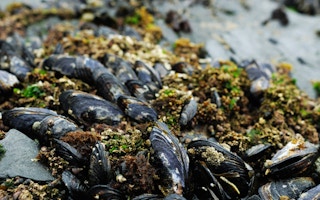If you like the occasional plate of grilled scallops or fancy an oyster now and then, read on and ponder. The health of several species of European shellfish is under threat.
The bad news is that the shellfish face an uncertain future as the oceans become warmer and more acidic because of the changing climate. But there is some better news too: the European Union is funding an international research team to work out how these changes will affect several species vital to the European fishing economy and to marine biodiversity.
Scientists do not fully understand how shellfish like oysters, mussels, scallops and clams produce their shells, or how a change in environment will affect their populations. To address this the EU is funding a €3.6 million (£3 m) programme called CACHE (Calcium in a Changing Environment). Shellfish are an important part of the European marine economy which provides an estimated 5.4 million jobs.
Coordinated from the British Antarctic Survey (BAS) in Cambridge, UK, the programme will research how the animals produce their shells. The scientists will also try to identify populations which are resilient to climate change.
These relatively small animals are important as part of the wider pattern of marine biodiversity. And, as they make their shells from calcium carbonate, they also help to absorb the greenhouse gas CO2 from seawater.
Biotech applications
The risk to them comes from their dependence on calcium carbonate – a substance which dissolves under acidic conditions. As the oceans become warmer and more acidic their shells will either thin, or the animals will have to expend more energy on producing thicker shells. This will affect their population sizes and the quality of their flesh, directly affecting fisheries and consumers.
How shellfish produce their shells also matters to the biotech industry, which is interested in imitating (in a process known as bio-mimicry) the way in which shellfish take a soluble compound like calcium to make solid, robust structures.
A better understanding of this could reduce the carbon footprint of producing construction materials and create the potential for “fixing” CO2 into the building process.
The species the research team is looking at are the king scallop, the Pacific oyster, the blue mussel and the soft shell clam. It will also study the native oyster to help conservation plans, as it is listed as a priority species in the UK.
Iceberg protection
Dr Melody Clark of BAS, the programme coordinator, told the Climate News Network: “The programme is driven by the science. We really don’t know the fundamentals of how shellfish respond to changing environments.
“We do know that, in response to environmental conditions, they can change how much shell they produce, for example growing thicker shells in response to predators. In the Antarctic, inter-tidal limpets grow much thicker shells than sub-tidal ones, because they are bashed by icebergs.
“And we don’t know just how they make their shells, whether with calcium from their food, or from the seawater.
“On bio-mimicry, this research may let us start to develop ways of producing more robust structures without carbon, and with little energy.
“We’re researching shellfish in European waters, but we’re recruiting the researchers worldwide, and the results will be relevant beyond Europe.”










